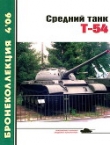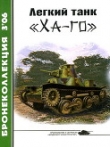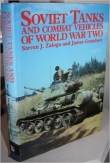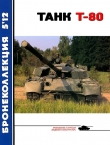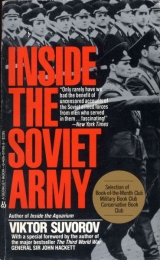
Текст книги "Inside The Soviet Army"
Автор книги: Viktor Suvorov
Жанр:
Публицистика
сообщить о нарушении
Текущая страница: 11 (всего у книги 26 страниц)
PART THREE
COMBAT ORGANISATION
The Division
1
We have already seen that the unit known as a `motor-rifle regiment' in the Soviet Army is in fact an all-arms unit with half the numerical strength of brigades in Western armies, which is nevertheless equal or even superior to the latter in fire-power and striking-power. This position is reached through the merciless exploitation of Soviet soldiers, who are regarded solely as fighting machines, rather than as human beings who require rest, good food, recreation and so forth.
Having a strength of 2,000, a motor-rifle regiment is equipped with 41 battle tanks, 3 reconnaissance tanks, 100 armoured personnel carriers, 6 130mm heavy assault guns, 18 122mm self-propelled howitzers, 6 `Grad-P' multiple rocket launchers, 18 self-propelled mortars, 18 automatic grenade launchers, 4 self-propelled anti-aircraft guns, 4 surface-to-air missile complexes, 100 light anti-aircraft and several hundred light anti-tank weapons, including the `Mukha', and the RPG-16 anti-tank rocket launchers, both portable and mounted on vehicles, together with the requisite engineer, chemical warfare, medical, repair and other supporting sub-units.
A modern Soviet tank regiment is organised along almost exactly the same lines as a motor-rifle, regiment, except that it has three tank battalions rather than one and one motor-rifle battalion instead of three. Its other sub-units are exactly the same: a battalion of self-propelled artillery, a battery of multiple rocket launchers, an anti-aircraft battery, reconnaissance, communications, engineering, chemical warfare and repair companies. The strength of such a regiment is 1,300. It has considerably fewer light anti-tank weapons than a motor-rifle regiment, reasonably enough in a regiment with a total of 97 tanks, since tank guns are the best of all anti-tank weapons.
2
A Soviet motor-rifle division is more of an all-arms unit than a motor-rifle regiment, containing, as it does, sub-units with the most varied functions and capabilities. The organisation of a division is simple and well-balanced. The strength of a motor-rifle division is 13,000. It is commanded by a Major-General. It is made up of:
A headquarters staff.
A communications battalion-the division's nerve-system, used for communications with all its elements, with the higher command and with neighbouring divisions.
A reconnaissance battalion-the eyes and ears of the division.
A rocket battalion-the most powerful weapon in the hands of the divisional commander, with six launchers which can fire chemical and nuclear weapons for distances of up to 150 kilometres.
An independent tank battalion-the divisional commander's bodyguard, which protects divisional headquarters and the rocket battalion, and which can be used in battle when the divisional commander needs all his resources.
A tank regiment-the division's striking force.
Three motor-rifle regiments, two of which are equipped with armoured personnel carriers and light weapons and which attack on a wide front during an offensive, probing for weak spots in the enemy's defences. The third regiment, equipped with infantry combat vehicles and with heavy weapons, is used with the tank regiment to attack the enemy at his weakest point-`in the liver' as the Soviet Army says.
An artillery regiment-the main fire-power of the division-which consists of three battalions of 152 self-propelled howitzers and one battalion of BM-27 heavy multiple rocket launchers. In all, the regiment has 54 howitzers and 18 heavy rocket launchers. The full strength of the regiment is used in the division's main axis of advance, in which the tank and heavy motor-rifle regiments are also active-that is, in the area in which the enemy has been proved to be most vulnerable.
The anti-aircraft (SAM) regiment has as its primary task the protection of the divisional headquarters and of the rocket battalion. It must also provide protection for the division's main battle group, even though this is already capable of defending itself against enemy aircraft. The regiment has five batteries, each with six rocket launchers. In peacetime, two of the launchers of each battery are held in reserve and the fact that they exist must not in any circumstances be disclosed until the outbreak of war. This has led Western experts to underestimate the defence capabilities of Soviet divisions, believing that each regiment has only 20 launchers whereas in fact it has 30. In order to maintain this illusion, the armies of all the Soviet allies actually do have only 20 launchers in each regiment.
The anti-tank battalion acts as the divisional commander's trump card when he finds himself in a critical situation. Until then it is kept in reserve. It is brought into action during a defensive action, when the enemy's tanks have broken through fairly deeply and once the direction of his main thrust can be clearly identified. In an offensive it is used when the division's main battle force has broken through in depth and the enemy is attacking its flank and rear. The battalion is armed with 18 100 or 125mm anti-tank guns and six anti-tank missile complexes.
The engineer battalion is used, together with the anti-tank battalion, to lay minefields rapidly in front of enemy tanks which have broken through, in order to stop them or at least to slow them down in front of the division's anti-tank guns. It also clears mines ahead of the division's advancing troops during an offensive and helps them to cross water obstacles.
The chemical warfare battalion carries out the measures necessary for defence against nuclear, chemical or biological attacks by the enemy.
The transport battalion supplies the division with fuel and with ammunition. Its 200 vehicles enable it to move 1,000 tons of fuel and ammunition at the same time.
The repair battalion recovers and replaces combat equipment.
The medical battalion does the same, but for the division's personnel.
The helicopter flight, which has 6 helicopters, is used for command and communications duties and to land the division's diversionary troops behind the enemy's lines.
The division has a total of 34 battalions. Those battalions which are subordinated directly to the divisional commander are given the designation `independent'-for instance `Independent Communications Battalion of the 24th Division'. This system is also used in all higher formations. For instance, an Army consists of divisions. But it also contains regiments and battalions which do not form part of its complement, which are called `independent' as, for instance in the `41st Independent Pontoon Bridge Regiment of the 13th Army'.
The total complement of a Soviet motor-rifle division is 287 tanks, 150 infantry combat vehicles, 221 armoured personnel carriers, 6 rocket launchers, 18 130mm heavy assault guns, 18 anti-tank guns, 126 self-propelled and towed howitzers, 96 mortars and multiple rocket launchers, 46 mobile anti-aircraft missile complexes, 16 self-propelled automatic anti-aircraft guns, and hundreds of light anti-tank and anti-aircraft weapons.
3
A tank division is organised in the same way as a motor-rifle division, except that it has three tank regiments rather than one and one motor-rifle regiment instead of three. In addition, a tank division has no independent tank or anti-tank battalions, since its anti-tank strength is much greater than that of a motor-rifle division.
A tank division has 10,500 men. It is equipped with 341 tanks, 232 infantry combat vehicles, 6 rocket launchers, 6 heavy assault guns, 126 self-propelled howitzers, 78 mortars and multiple rocket launchers, 62 self-propelled anti-aircraft missiles and artillery complexes and hundreds of light anti-aircraft and anti-tank weapons. While it has fewer personnel, a tank division has far greater striking power than a motor-rifle division.
The Army
1
Until the mid-1950s, divisions were organised in corps, and a number of corps made up an Army. However, because of the greatly increased combat strength of the divisions, and also because an Army Commander had acquired the means to control all his divisions simultaneously, the corps came to be considered unnecessary as an intermediate formation and was therefore abolished.
Today, however, a relatively small number of corps are left in the Soviet armed forces. They exist where a division is too small a unit for the task in hand and an Army too large.
From time to time in this book we have used the term `All-Arms Army'. This has been done in order to distinguish this type of Army from Tank Armies, Air Armies, Air Defence Armies and Rocket Armies. However, in normal usage the expression `all-arms' is not used; instead, the units concerned are simply referred to as the 13th or the 69th Army. Some have honorary titles, such as `2nd Shock Army' or `9th Guards Army'. These titles add nothing to the present-day strength of these armies-they are simply reflections of past glory. For instance, the 3rd Army, which has no honorary title, is considerably better equipped than the 11th Guards Army.
Sometimes Armies evolve along new lines but keep their former designations, which do not fit their present functions. Thus, the 2nd Tank Army is now an All-Arms Army. By contrast, the 3rd Shock Army, despite its designation, is in fact a Tank Army.
During the Second World War the Red Army had a total of 18 Air Armies, 11 Air Defence Armies, 6 Guards Tank Armies, and 70 other armies, of which 5 were known as Shock Armies and 11 as Guards Armies.
Today there are fewer armies but their strengths vary considerably. The Soviet Armed Forces now have 3 Rocket Armies, 10 Air Defence Armies, 16 Air Armies, 8 Guards Tank Armies and 33 other armies, a number of which are still referred to as either Shock or Guards Armies.
2
In the West it is firmly believed that today's Soviet Armies lack a clear organisational structure. A superficial analysis of the complement of each of the Soviet Armies seems to confirm this: some Armies have 7 divisions while others have only 3. The proportion of tank and motor-rifle divisions which they contain also varies constantly.
In fact, though, Armies do have quite clear organisational structures. However, the Soviet Union does not think it advisable to display this clarity in peacetime; this would throw too much light on their plans for war. Divisions have a high degree of administrative autonomy and can be quickly regrouped from one Army to another. In peacetime the system certainly does seem illogical, but once a war began each Army would take on an entirely clear shape.
There is one further cause for this apparent confusion. This is that the Soviet Union has forbidden its East European allies to establish Armies in either peacetime or wartime. If a homogeneous mass becomes too large it may explode. The Soviet High Command avoids this danger within the Soviet Army itself, by constantly moving the various nationalities around, to produce a featureless grey mass of soldiery, unable to understand one another. In peacetime, the armed forces of the East European countries only have divisions. In wartime these divisions would immediately join Soviet Armies which were under strength. This is precisely what happened in the summer of 1968.
In peacetime, these East European divisions see themselves as part of their own national armed forces. In wartime they would be distributed throughout the Soviet Armies; for administrative purposes they would come under their national Ministries of Defence and, ultimately, under the Commander-in-Chief of the Warsaw Treaty Organisation. For military purposes they would be subordinated to the Soviet Armies, Fronts and Strategic Directions and, ultimately, to the Soviet Supreme Commander and to his General Staff. It is because of this that the Staff of the Warsaw Treaty Organisation is a bureaucratic institution rather than operational headquarters. And this is why, in peacetime, many Soviet Armies appear unstructured. In wartime they would be brought up to strength with East European contingents and they would then assume their proper forms.
3
In wartime an Army consists of five divisions, one of which is a tank division, and the remaining four motor-rifle divisions. In various instances in which the mass use of tanks would be difficult, an Army may have nothing but motor-rifle divisions, which have only a limited number of tanks. But the Armies which are earmarked to operate in Western Europe are made up in this way-one tank and four motor-rifle divisions.
Besides these five divisions each Army has:
A headquarters staff-the brain of the Army.
A communications regiment-its nervous system.
An independent SPETSNAZ diversionary company and two signals intelligence battalions-its eyes and ears.
A rocket brigade-the most powerful weapon in the hands of the Army's commander, which enables him to deliver nuclear and chemical attacks. Earlier each brigade had 9 launchers, with a range of up to 300 kilometres. Today a brigade has 18 launchers, with a greatly increased range.
An independent tank battalion-the Army Commander's personal guard. This defends the Army's control post and the rocket brigade and is brought into action only in the most critical situations, when everything is at stake.
An artillery brigade-the main fire-power of the Army. This consists of five battalions-three with 18 130mm guns each, one with 18 152 mm gun-howitzers and one with 18 BM-27 multiple rocket launchers.
An anti-aircraft brigade, which covers the Army's command Post and Rocket Brigades with its fire and which also operates in the Army's main axis of advance, supplementing the anti-aircraft coverage which the divisions can provide for themselves. This brigade consists of a command battalion, a supply battalion and three fire-battalions, each with three batteries.
The camouflage service has decreed that one of the launchers in each of these batteries is never to show itself. It therefore appears to observers that these batteries consist of three launchers, whereas in fact they have four, one of which is always kept in reserve. An anti-aircraft brigade is therefore generally believed to have 27 launchers, whereas in fact it has 36.
An anti-aircraft regiment, which has 30 57mm S-60 anti-aircraft guns. Experience in Vietnam and in wars in the Middle East has shown that conventional anti-aircraft artillery has by no means outlived its usefulness and that there are many situations in which the effectiveness of anti-aircraft rockets falls off sharply and that anti-aircraft guns can supplement these most usefully.
An anti-tank regiment, which consists of three battalions. This has 57 heavy anti-tank guns and 18 anti-tank missile complexes.
An independent anti-tank battalion, which has 40 IT-1 tracked anti-tank rocket launchers. The existence of these battalions, and of the IT-1 itself, is a carefully guarded secret. These batteries do not form part of the anti-tank regiment, and there is a sound reason for this, since they carry out operations using quite different tactics. The independent anti-tank battalions, with their highly mobile launchers, harass the enemy constantly, making surprise attacks from vehicles and manoeuvring from area to area under the pressure exerted by the enemy's superior forces. Meanwhile the anti-tank regiment, armed with more powerful but less manoeuvrable guns, has the task of stopping the enemy tanks, at absolutely any cost, when they reach a previously defined line. Thus the more mobile battalion goes into action against the enemy's tanks from the momient the latter break through, while the anti-tank regiment, deep in the rear, is preparing an impassable barrier, behind which it will fight to the last man.
The helicopter squadron is used for communications and for control, and sometimes to land troops behind the enemy lines. It has 16 medium and 4 heavy helicopters.
The Army's supporting sub-units include:
An engineer regiment
A pontoon bridge regiment
An independent assault crossing battalion
A transport regiment
An independent pipe-laying battalion
A chemical warfare battalion
A medical battalion
A mobile tank-repair workshop, with a tank recovery company
In wartime the complement of an Army is 83,000. It has 1,541 tanks, 48 rocket launchers, 832 infantry combat vehicles, 1,100 armoured personel carriers, 1,386 guns, mortars and multiple rocket launchers, 376 heavy anti-aircraft missile launchers and anti-aircraft guns, 40 transport helicopters and thousands of light anti-aircraft and anti-tank weapons.
4
A Tank Army, like an All-Arms Army, has a permanent complement which is strictly observed. Its organisation is standardised with that of an All-Arms Army. It is therefore simpler not to list the rocket brigade, the diversionary company and so forth but simply to pick out the features which distinguish a Tank Army from an All-Arms Army. There are three such features:
(1) An All-Arms Army has five divisions, one of which is a tank division. A Tank Army has only four, all of which are tank divisions.
(2) A Tank Army does not break through the enemy's defences. This is done for it by the All-Arms Armies. Therefore a Tank Army does not have an artillery brigade, of which it has no need. But while it is operating deep in the defences of the enemy it may suddenly encounter strong enemy forces against which massed intense fire must be brought down very quickly. For this purpose, in place of an artillery brigade, a Tank Army has a regiment of BM-27 multiple rocket launchers.
(3) A Tank Army does not fight to hold areas or lines: its task is solely to attack the enemy. It therefore has no anti-tank regiment (which holds territory) or independent anti-tank battalion (which harasses the advancing enemy). It has no need of these sub-units, which would contribute nothing to its proper function.
In the near future there will be one further special feature in the organisation of a Tank Army. It will include an air-borne assault brigade, which has the function of seizing and holding bridges, crossing points and road junctions ahead of the avalanche of advancing tanks. At present only Fronts have these brigades. Temporarily, until they come into service, Tank Armies are forced to use motor-rifle regiments, or sometimes divisions, which have battalions with special training in helicopter assault landings. Once the air-borne assault brigades join the Tank Armies, the need for such motor-rifle regiments and divisions will disappear.
In all, in wartime, a Tank Army has 54,000 men, 1,416 tanks, 993 infantry combat vehicles, 894 guns, mortars and multiple rocket launchers, 42 rocket launchers, 314 heavy anti-aircraft missile launchers and anti-aircraft guns, 64 combat and 34 transport helicopters and thousands of light anti-aircraft and anti-tank weapons.
5
If we compare the weapons available to an All-Arms Army with those of a tank Army, we discover an apparently paradoxical situation; the Tank Army has fewer tanks than the All-Arms Army, but more infantry combat vehicles than the latter, whose very foundation is its motor-rifle sub-units!
In fact, though, this is not a paradox. An All-Arms Army is a combination of tanks, of heavy and light motorised infantry, artillery and other forces whose job is to break through the enemy's lines.
A Tank Army is far smaller than an All-Arms Army. It is a combination of tanks and heavy infantry, with artillery and operational helicopter sub-units, whose job it is to operate deep in the enemy's rear.
An All-Arms Army has more than 1,000 armoured personnel carriers (for light infantry) and a Tank Army has practically none.
A Tank Army, being smaller, has far better cross-country performance, and greater manoeuvrability and striking power. It has fewer tanks than an All-Arms Army, but they are far more highly concentrated. This gives the Tank Army a clearly defined offensive character, while the All-Arms Army is essentially a universal weapon.
The Front
1
The Front is a group of Armies, unified under a single command to carry out combat operations in wartime. It is set up either during or immediately before the outbreak of a war. It is an all-arms formation in every respect, incorporating elements of the various Armed Services.
The Commander of a Front has an operational, not an administrative function. He possesses very considerable authority and the forces under his command are not subordinate to the Commanders-in-Chief of their respective Services. The different Services from which the forces making up a Front are drawn are not permitted to interfere in the operational use of these forces. A Front Commander has sole and personal responsibility for the preparation, conduct and outcome of combat operations. He is subordinated either to the Commander-in-Chief of a Strategic Direction who is in control of operations or directly to the Supreme Commander himself. The Armed Services from which the forces making up a Front are taken are concerned only with the reinforcement, reequipment, provisioning and supply of these forces.
This clear differentiation between operational and administrative functions makes it possible to concentrate complete authority in individual hands, to avoid duplication of control, to ensure proper cooperation between sub-units of different Armed Services and to avoid friction between them.
At the beginning of the war between the Soviet Union and Germany, five Fronts were created. In the course of the war their number was increased to fifteen. During its final stages the Fronts operating in the Central Direction were made up of 1 or 2 Air Armies, 2 or 3 Tank Armies, 8 or 9 All-Arms Armies and a considerable number of independent tank, artillery and motor-rifle corps. These Fronts had strengths of up to a million soldiers, three thousand tanks, three thousand aircraft, and up to fifteen thousand guns and mortars.
2
After the war, because of the introduction of nuclear weapons and as part of the continuous technical improvement of the Armed Forces, it was decided that in any future war more powerful, more compact and therefore more easily controlled Fronts would be used.
Contrary to the belief held in the West, Fronts have a quite clearly defined combat organisation, like battalions, regiments, divisions and armies.
A Front comprises:
A command staff.
A communications regiment-the nerve system.
A diversionary `SPETSNAZ' brigade, a signals intelligence regiment and a radar battlefield surveillance regiment-the eyes and ears of the Front.
An Air Army.
A Tank Army-the Front's striking force.
Two All-Arms Armies.
An independent tank brigade-the Front Commander's personal guard, which defends his command post and the Front's rocket brigades. This brigade is only brought into action in the most critical situations.
Two rocket brigades. One has 12 launchers with a range of 9–1,200 kilometres and is used in accordance with the plans of the Front Commander. The second brigade is similar in composition and armament to an Army's rocket brigade and is used to strengthen the Army which is having the greatest success.
An artillery division, consisting of six regiments and an anti-tank battalion. Three of the regiments have 54 130mm M46 guns each and two of the remainder have 54 152mm D20 howitzers each. The other regiment has 54 240mm mortars. The artillery division, in its entirety, is used, to strengthen the artillery of the Army which is having the greatest success.
A specially strengthened artillery brigade, consisting of five battalions. The first three each have 12 180mm S-23 guns, the other two each have 12 203mm B-4M howitzers. The brigade is used to strengthen the Army which is having the greatest success.
A tank-destroyer brigade, of five battalions, armed with 90 heavy anti-tank guns and 30 anti-tank rocket complexes.
Two anti-aircraft missile brigades and two anti-aircraft artillery regiments, equipped and organised like similar sub-units in an Army.
An airborne assault brigade, used for the rapid capture of important lines, bridges, crossings and mountain passes in support of the Front's advancing forces. In the next few years commanders of the Tank Armies of a Front will also each have one such brigade.
Several penal battalions, which are used to negotiate minefields and for attacks on strongly fortified enemy positions. The number of penal battalions available depends on the numbers of soldiers and officers who are unwilling to fight for socialism.
The supporting sub-units include:
An engineer brigade.
A pontoon bridge brigade.
An assault-crossing battalion.
A transport brigade.
A pipe-laying regiment.
A CW protection regiment.
Several field and evacuation hospitals.
A mobile tank repair workshop.
A tank transport regiment.
In territories in which it is difficult to use tanks, a Front will have no Tank Armies. Instead of these it may have an independent tank division but it may not have this either. This does not, of course, apply to Western Europe.
Fronts earmarked for operations in Western Europe will have up to 5,600 tanks, 772 combat aircraft, 220 helicopters, 3,000 infantry combat vehicles, 3,000 armoured personnel carriers, and up to 4,100 guns, mortars and salvo-firing rocket-launchers together with a large quantity of other arms and combat equipment.
3
It will, of course, be pointed out that the forces stationed on East German territory are precisely twice as strong as those I have listed, having:
Not one Tank Army, but two
An Air Army which has a considerably larger number of aircraft than I have shown
Two airborne assault brigades, rather than one
Not one diversionary brigade, but two
Four rocket brigades, instead of two
Two engineer brigades, not one
Two pontoon bridge brigades, rather than one
An artillery division which has more than 700 guns, as against the 324 listed above
How can this be explained? There is nothing mysterious about it. A Front advancing against a strong enemy may have a zone of advance of 200–250 kilometres. In East Germany there is thus room for two Fronts. In Czechoslovakia there is room for only one.
Two routes lead from East Germany to the West, separated from each other by a considerable distance. Because of this, it is convenient to employ two different Fronts; control over a single Front advancing in two different directions is bound to produce difficulties. If the Soviet forces are supplemented with East German units there will be precisely two Fronts in the GDR. No publicity is given to this intention in peacetime, in order to keep it secret. Besides, it is quite simply inconvenient to keep two generals of equal seniority in the same country. For the senior Soviet officer in the GDR is not only a military commander, he is also the administrative head of a Communist colony. For this reason the staffs of the Fronts are unified, although even for annual exercises they separate, as do the Air Armies and the artillery divisions. A single telephone call is all that is needed to set up two separate fronts-everything else has been arranged already.

